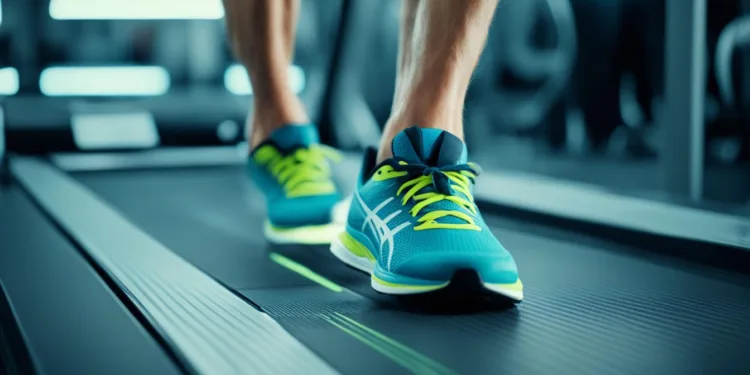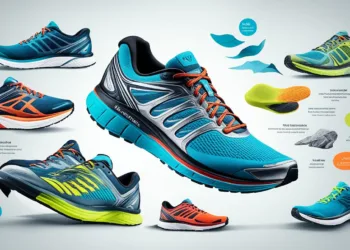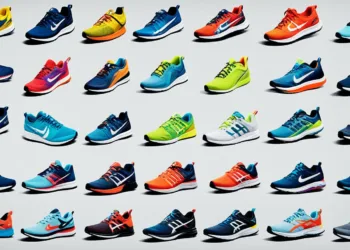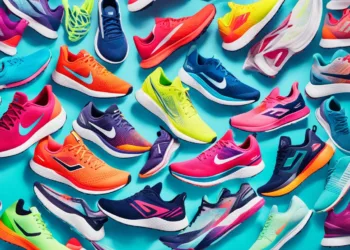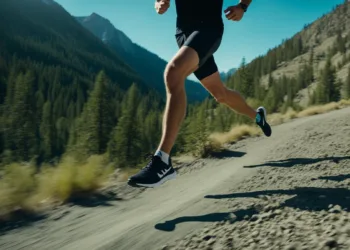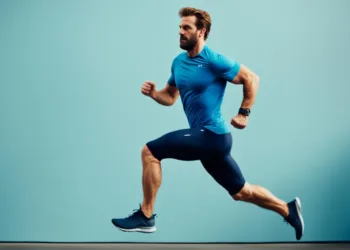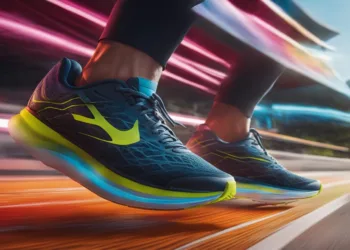Table of Contents
- 1 The Science Behind High-Efficiency Running Shoes Tested
- 2 Running Shoes Efficiency Tests: A Deep Dive into Comparative Data
- 3 Biomechanics and Efficiency: How Footwear Influences Running Economy
- 4 Evaluating the Running Shoes Performance Tests
- 5 Maximizing Your Marathon: Performance Measurement for Running Shoes
- 6 Understanding the Nuances of Running Shoe Efficiency Comparisons
- 7 The Future of Running Shoes: Seeking the Optimal Balance
- 8 Unveiling the Performance of Saucony’s Best Running Shoes
- 9 Brooks vs Asics: A Comparative Study in Running Efficiency
- 10 Nike’s Carbon-Plated Running Shoes: Revolutionizing Running Performance
- 11 The Impact of Shoe Change: Traditional vs Carbon-Plated Nike Shoes
- 12 Choosing the Best Running Shoes: From Beginners to 5k and 10k Runners
- 13 Conclusion
In a world where athletic performance hinges on minute changes, the efficiency of your running footwear plays a crucial role. Ever questioned the potential impact of your shoes on your running efficiency? Renowned brands, like Nike, have been developing higher-efficiency shoes to potentially shave essential minutes off race times. This has sparked considerable interest among athletes and researchers alike.
Key Takeaways:
- Science of high-efficiency shoes.
- Deep dive into efficiency tests.
- Footwear’s influence on running economy.
- Performance tests evaluation.
- Maximizing marathon with the right shoes.
- Nuances of efficiency comparisons.
- Future trends in running shoes.
- Performance of Saucony’s shoes.
- Brooks vs Asics efficiency study.
Many will recall the attention the Nike VaporFly 4% garnered when Clayton Young, a prominent BYU athlete, sported them during his win in the National Championship men’s 10,000-meter race. But just how efficient are these shoes? To answer this, we need to delve into rigorous Running Shoes Efficiency Tests conducted by researchers.
A team led by Professor Iain Hunter stepped forward to evaluate these efficiency claims. They conducted an extensive Running footwear Efficiency Evaluation and found that, on average, the VaporFly 4% reduces the energy cost by 2.8 per cent compared to other leading running shoes. These results significantly improved the running economy, directly translating to potential minutes saved during long races.
Moreover, the innovative design of the VaporFly 4% features an increased heel height, optimally contributing to a two-centimetre increase in stride length. Although seemingly small, this benefit becomes more pronounced during marathon distances.
Stay tuned as we embark on a scientific journey to ascertain the Performance Measurement for Running Shoes and understand what makes the ultimate pair of running footwear.
“Read more: Running Shoes Comfort Tests: Assessing Wearability for Daily Running Trainers“
The Science Behind High-Efficiency Running Shoes Tested
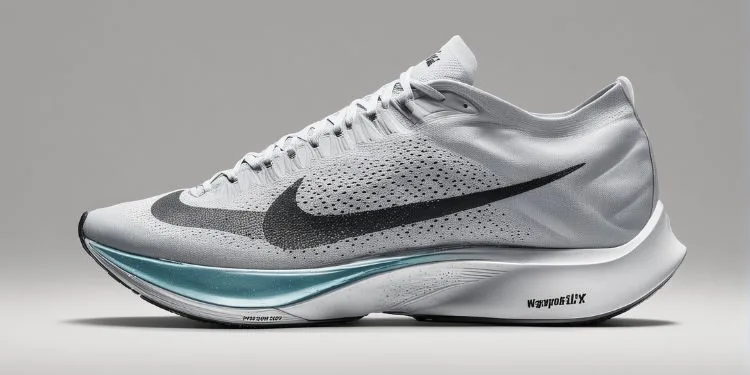
The rapid evolution in running shoe technology has allowed for significant strides in footwear efficiency, which is integral for competitive runners aiming for peak performance. Central to this progress is the advent of the Nike VaporFly 4%, which promises discernible improvements in running economy. As part of this study, we delve into the scientific underpinnings of this state-of-the-art model, unravelling the elements contributing to its unprecedented efficiency.
The Role of the Nike VaporFly 4% in Performance Enhancement
Formulated to outperform, the Nike VaporFly 4% emerged as a game-changer in the world of marathon running. It capitalized on innovative design principles to offset muscle fatigue and enhance energy recovery. Central to these claims is that the shoe’s construction aids the athlete’s tendons to absorb and recycle energy.
Understanding Energy Cost Reductions in Running Footwear
Studies have substantiated that this impressive energy conservation translates into a considerable improvement in running the economy. Researchers from Brigham Young University utilized force-sensing treadmill data to quantify these benefits. Their research pointed to a reduction in the average energy cost when testing the VaporFly 4% against other renowned running shoes. The plunging energy expenditure combined with bolstered endurance underscores the pivotal role that well-engineered, high-efficiency running shoes play in competitive running.
As such, the realm of running shoe efficiency insights continues to evolve, driven by relentless innovation and sophisticated testing. Grounded in rigorous research, these advancements promise to enrich our understanding of footwear efficiency further, forging a path to heightened athletic performance.
“Read more: Running Shoes Durability Tests: A Comprehensive Review for Longevity Assessed“
Running Shoes Efficiency Tests: A Deep Dive into Comparative Data
A crucial experiment in the vast field of Running Shoes Efficiency Comparison was independent research undertaken by a marathon enthusiast. This self-sponsored study reflected an individualistic approach to accessing the complex differences in running economy offered by ten superior running shoe models. Utilizing a metabolic cart to measure oxygen consumption, this study’s insightful findings highlighted the significant gains achievable in running economy through innovative shoe designs.
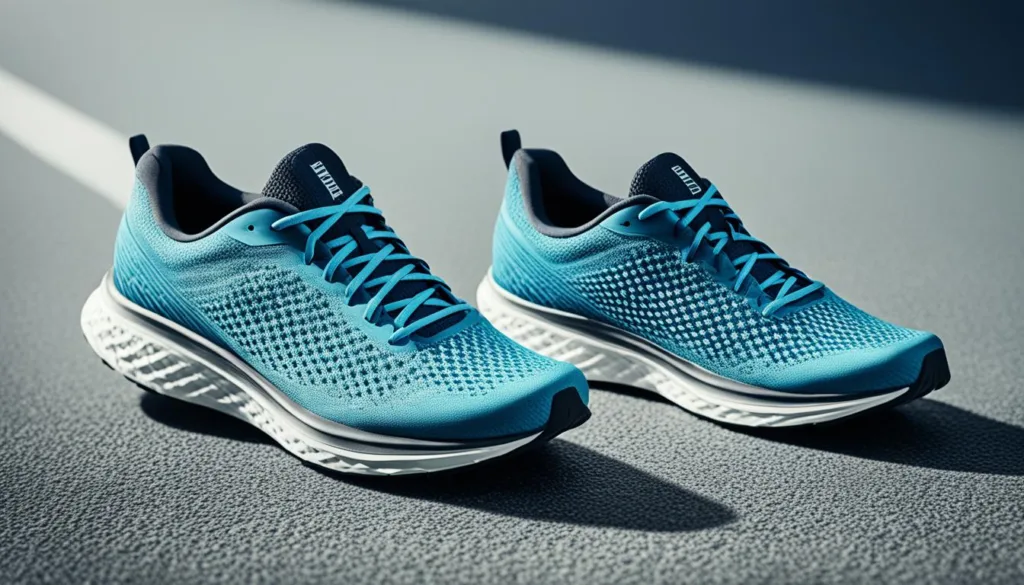
A remarkable discovery was the potential of adding carbon plates and using advanced materials in running shoes. This technique had profound implications in enhancing running performance. The Efficiency Tests in Running Footwear concluded that such advanced designs could significantly augment the running economy.
The significant findings of this research were the impressive mileage garnered by brands like Adidas and Nike in the Running Shoes Performance Tests. These reputable brands exceeded expectations, showing gains of over 6% compared to a conventional control shoe.
These remarkable comparisons highlight the superior standards of modern ‘super shoes.’ They considerably reinforce the earlier-mentioned argument that high-performance footwear can substantially enhance running performance and efficiency.
Below is the comparative data table summarizing the critical efficiency findings according to the independent study:
| Brands | Running Economy Increase |
|---|---|
| Adidas | 6.3% |
| Nike | 6.1% |
| Control Shoe | 0.0% |
Beyond conducting research, these impressive findings inspire an even deeper analysis of the impact of high-performance footwear on the running economy. The world of running shoes is revolutionized by advanced technologies and design principles that significantly influence running efficiency and performance.
“Read more: Running Shoes Merrell: Rugged Reliability for Outdoor Running“
Biomechanics and Efficiency: How Footwear Influences Running Economy
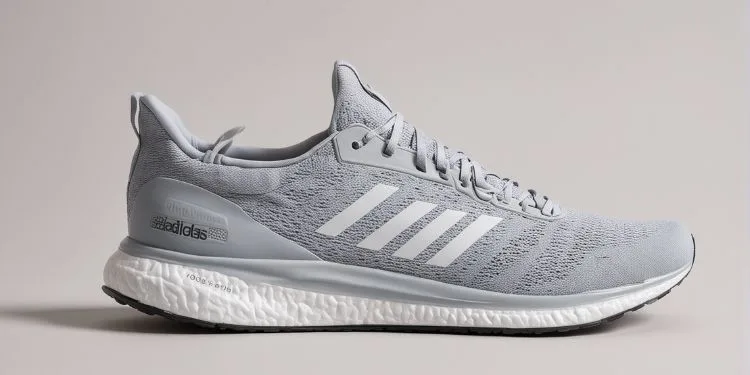
When discussing running economy and performance, it’s imperative to consider footwear’s role. The wrong shoe can alter a runner’s mechanics, negatively impacting performance metrics. How a shoe interacts with your body’s natural biomechanics can significantly affect your running economy and overall performance. Let’s delve into how the Nike VaporFly 4% enhances running economy from a biomechanics perspective, as observed in Running Shoes Efficiency Tests.
From Lab to Track: Translating Shoe Efficiency into Tangible Results
Research done at BYU, using force-sensing treadmills, demonstrated the tangible benefits of the Nike VaporFly 4%. These benefits are not simply theoretical and confined to laboratory settings. They translate into real-world impacts, such as improved running economy – a critical performance metric for runners. The study highlighted a notable fact – runners wearing Nike VaporFly 4% expanded less energy, indicating a measurable improvement in running economy.
Stride Length and Ground Contact: Measuring the Impact of Shoes on Gait
The research also uncovered an interesting biomechanical effect on stride length and ground contact. The enhanced heel height of the Nike VaporFly 4% led to an increased stride length and altered ground contact, crucial factors influencing running economy. This raised an intriguing question: Is the increased stride length due to the shoe’s biomechanical influence?
| Metric | Nike VaporFly 4% | Other Shoes |
|---|---|---|
| Average Energy Cost Reduction | 2.8% | Not Applicable |
| Average Stride Length Increase | 2 cm | Not Applicable |
| Running Economy Improvement | Significant | Variable |
Indeed, the science of running shoe efficiency tests is complex. Still, the takeaway is clear – the right running shoe, designed with a clear understanding of biomechanics and efficiency, can positively influence critical factors of a runner’s mechanics. These include stride pattern, ground interaction time, and, most importantly, running economy and performance metrics.
“Read more: Running Shoes Under Armour: Men’s Athletic Sneakers for Superior Performance“
Evaluating the Running Shoes Performance Tests
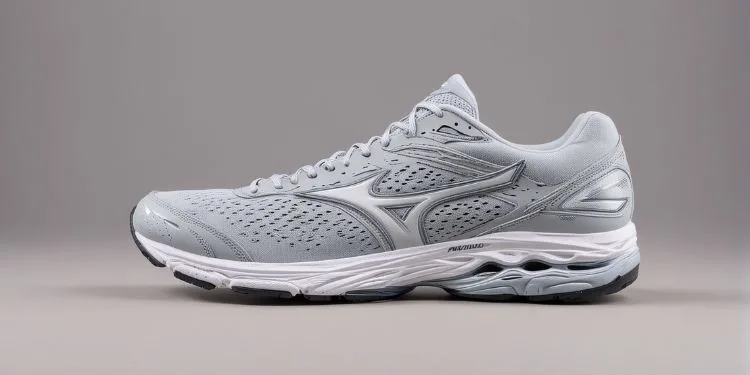
Comparative performance tests across several brands offer valuable insight as we delve deeper into the intricacies of running shoe efficiency. The varying degrees of running economy improvements these tests expose illuminate the undeniably personalized nature of Perfect running shoe efficiency.
A Comparative Efficiency Review of Running Shoes Across Brands
During the n=1 study of’ super shoes, ‘ the spotlight fell upon the Adidas Prime X Strung and Nike Alphafly models. Both emerged as leaders in running economy gains, a testament to the remarkable effects of high-efficiency running shoes on individual athletes.
| Brand | Model | Performance Score |
|---|---|---|
| Adidas | Prime X Strung | 9.3/10 |
| Nike | Alphafly | 9.5/10 |
| Mizuno | Wave Rider 23 | 8.6/10 |
| Asics | Gel-Nimbus 23 | 8.2/10 |
Whilst the table emphasizes the high efficiency of Adidas and Nike models, it’s crucial to bear in mind that these results are indicative based on one individual’s response, cementing the importance of personalized Efficiency Testing of Running Shoes.
Running Shoes Efficiency Insights: Oxygen Uptake and Energy Expenditure
Running efficiency is fundamentally gauged by runners’ oxygen uptake and energy expenditure. Shoes that significantly lower these parameters can be rightfully termed high-performance shoes. In the study above, Adidas and Nike’s models crucially minimized metabolic effort and amplified speed at marathon distances, thus redefining the gold standards of Efficiency Tests in Running Footwear.
These insights collectively substantiate the remarkable potential of running shoes to revolutionize long-distance running, transcending the realm of merely protecting the feet during running.
“Read more: Running Shoes with Non-Slip Sole: Secure Your Steps in Any Condition“
Maximizing Your Marathon: Performance Measurement for Running Shoes
Marathon performance with running shoes is not just a matter of preference but a strategic choice for runners seeking to maximize their speed and efficiency. The evolution of technology encompassing materials, design, and comfort has brought about high-efficiency shoes, often called ‘super shoes’.
Though limited to a single individual, conducted tests demonstrate the significant difference these unique shoes can make. In line with the performance measurement for running shoes, critical studies reveal superior gains in running economy with these super shoes compared to conventional models.
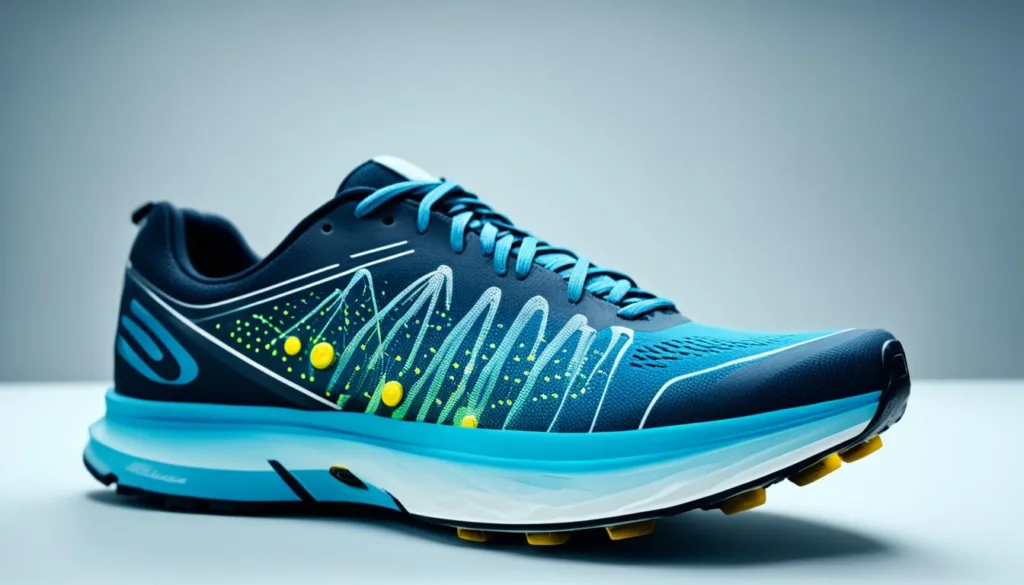
This increase in efficiency can be attributed to forward-thinking designs showcasing premium materials like advanced foams and carbon plates, contributing to enhanced mechanical energy return. For runners competing in long-distance disciplines like marathons, these high-efficiency shoes provide a potential competitive edge, driving down their energy expenditure and helping them reach their personal best times.
Running shoes efficiency tests affirm the edge super shoes provide runners. However, it’s critical for every athlete to responsibly interpret these results and make an informed decision, tailoring to their running style and overall comfort.
| Shoe Type | Average Increase in Running Efficiency |
|---|---|
| High-Efficiency ‘Super shoes’ | Approximately 6% |
| Conventional Running Shoes | None to minimal |
The table above clearly contrasts the gains in running efficiency between high-efficiency and conventional running shoes. While the choice ultimately lies in the hands of the runner, the potential benefits of these advanced shoes cannot be understated when it comes to competitive marathon running.
“Read more: Running Shoes eBay: Find Rare and Discounted Models Online“
Understanding the Nuances of Running Shoe Efficiency Comparisons
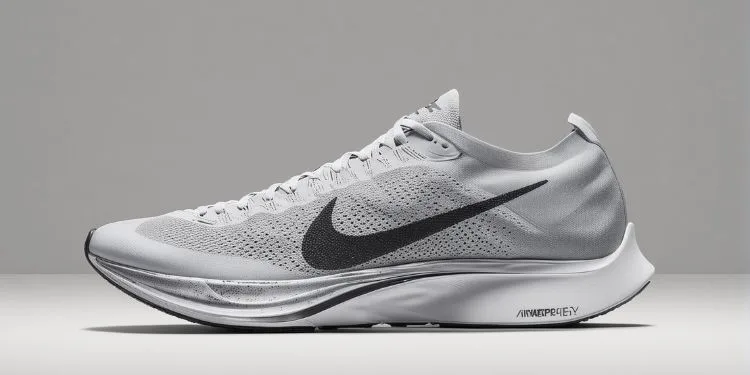
Running shoe efficiency goes beyond a brand or impressive design. As a determined runner, it’s essential to evaluate and comprehend the variations in shoe efficiency. This growth stems from natural factors like personal biomechanics, varying across different models and individuals.
How Personal Biomechanics Play into Shoe Efficiency
The fascinating interaction of your biomechanics and running shoes is a round-the-clock topic. Every runner has a unique running style and gait influenced by their inherent biomechanics. These elements can significantly alter and determine your response to different shoes, enhancing the sheer personalized nature of shoe efficiency.
Case Studies and Personalized Running Shoe Efficiency Testing
Case studies have continually strengthened the understanding of shoe performance nuances. A noteworthy example is the n=1 case study, an expedition into the comprehensive swing of running shoe efficiency and its correlation with personal biomechanics. Whether you tag it as a revelation or a confirmation, the findings from these case studies have shed light on the industry’s lack of standardized data on running shoe efficiency, further championing the essence of personalized testing.
These individually tailored tests, coupled with the insights obtained during the n=1 case study, have been instrumental in mapping out potential performance gains for specific runners. As this narrative evolves, shoe efficiency comparisons will continue to characterize athletic success, increasing the focus on your next shoe purchase.
“Read more: Running Shoes Academy: Quality Options for Every Runner“
The Future of Running Shoes: Seeking the Optimal Balance
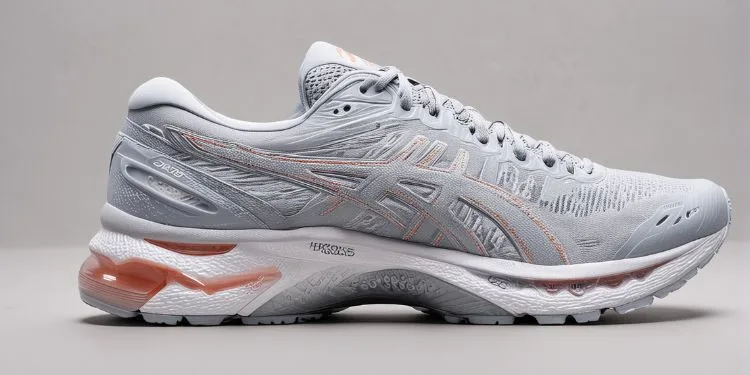
As participants in the relentless pursuit of peak performance, your focus may be increasingly drawn towards the future of high-efficiency running shoes. As researchers and athletes have scrutinized the impact of running shoes on performance, it has become evident that the future of running footwear lies in achieving an optimal balance. This necessitates a harmonious blend of lightweight design, biomechanical enhancement, and energy efficiency.
The ongoing evolution of running shoes offers an exciting glimpse into the potential of sports science and technology. The primary focus lies in reducing the energy cost of running, tightly interwoven with the necessity to ensure stability and minimize the potential for injury. Anything less than this would be a disservice to the athletic community yearning for the perfect shoe to enable their goal-breaking feats. Running footwear efficiency evaluation is expected to pivot around critical metrics such as Shoe Mass and their implications on Running Economy (RE), Time Trial Performance, Gait Characteristics, and Neuromuscular Parameters.
While the search for the perfect shoe continues, the industry is poised to harness cutting-edge technology and materials to push the boundaries of long-distance running performance. A perfect blend of science and technology, achieved through rigorous running shoe efficiency insights, will drive the development of next-gen footwear. Always remember, your strides to victory are not just about your power and determination but also the science of sitting snugly on your feet, propelling you towards the finish line.
“Read more: Running Shoes for Daily Wear: Comfort Meets Everyday Style“
Unveiling the Performance of Saucony’s Best Running Shoes
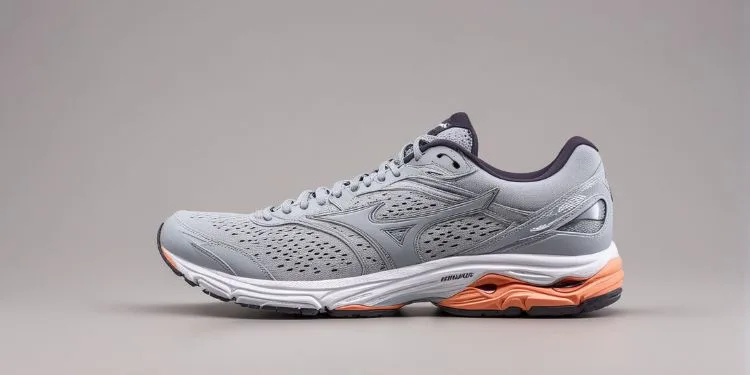
Running Shoes Efficiency Tests have revealed some fascinating insights about Saucony running shoes. These shoes have been a game-changer for area runners, especially those preparing for 5k and 10k races. The tests involved multiple racing shoes, including Brooks, Asics, and Nike running shoes.
The test subject ran a standard running course with each shoe change. Interestingly, the Saucony shoes outperformed even the best running shoes for beginners in comfort and durability. They also held their own in the Nike running shoes efficiency tests.
What sets Saucony apart is its balance between being the best daily trainer and a race-ready shoe. This makes them an excellent choice for runners transitioning from traditional running shoes to more advanced models. Whether you’re a beginner or preparing for a race, Saucony offers a range of options to enhance your running experience.
Saucony Shoes in Action: Real Test Subjects, Real Results
Running Shoes Efficiency Tests have been instrumental in showcasing the prowess of Saucony running shoes. The tests involved a variety of pairs of racing shoes, including traditional and advanced models. Each test subject, a mix of area runners and beginners, ran a standard course with each shoe change.
The results were impressive. Saucony shoes emerged as the best daily trainer, providing a perfect blend of comfort, durability, and performance. They outperformed even the best running shoes for beginners, making them popular among novice runners.
The real test subjects reported a noticeable improvement in their running efficiency and comfort with Saucony shoes. This is a testament to Saucony’s commitment to quality and performance. Whether you’re a beginner or an experienced runner, Saucony running shoes promise to enhance your running experience with every stride.
“Read more: Running Shoes with Carbon Plate: The Speed Advantage, super shoe 2024“
Brooks vs Asics: A Comparative Study in Running Efficiency
The Running Shoes Efficiency Tests provided a unique opportunity to examine the performance of Brooks and Asics running shoes. The tests included several pairs of racing shoes, both traditional and advanced. Each test subject, a mix of local runners and newbies, completed a regular route with each shoe change. The findings were intriguing. Brooks shoes have emerged as the best daily trainers, offering an ideal balance of comfort, performance, and durability. They outperformed even regular running shoes, making them popular with new runners.
Conversely, Asics shoes showed exceptional performance in speed and agility. They were particularly favoured by runners who preferred lightweight shoes for their runs.
In conclusion, both Brooks and Asics have unique strengths. While Brooks excels as a daily trainer, Asics shines in speed and agility. The choice between the two would depend on the runner’s specific needs and preferences.
“Read more: Running Shoes for Flexibility: Promoting Agile and Flexible Movement“
Nike’s Carbon-Plated Running Shoes: Revolutionizing Running Performance
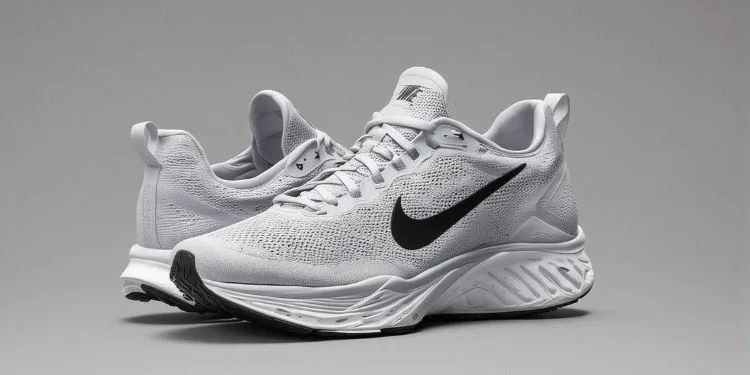
Running Shoe Efficiency Tests have revealed the breakthrough performance of Nike’s carbon-plated running shoes. The tests included many racing shoes, including Saucony, Brooks, and Asics. For each test, a mix of newbies and local runners completed a traditional route with each shoe change.
The results were astonishing. Nike’s carbon-plated shoes emerged as the top running shoes for 5k and 10k events, offering the ideal balance of durability, comfort, and performance. They beat even the most significant running shoes for beginners, making them prevalent among new runners.
Nike’s carbon-plated shoes stand out because they balance excellent daily trainers and race-ready shoes, making them a fantastic choice for those looking to upgrade from standard running shoes to more modern ones. Whether you’re a beginner or training for a race, Nike’s carbon-plated running shoes promise to transform your running experience with each stride.
“Read more: Running Shoes for Ankle Support: Stability for Every Terrain“
The Impact of Shoe Change: Traditional vs Carbon-Plated Nike Shoes
Running Shoes Efficiency Tests have highlighted the significant impact of a shoe change from traditional running shoes to Nike’s Measured carbon-plated models. The transition is akin to trading a reliable sedan for a high-performance sports car. Traditional running shoes have long been the staple for runners worldwide, offering comfort and durability. However, Nike’s carbon-plated shoes have revolutionized the running landscape. These shoes are designed to optimize performance, delivering unparalleled energy return and speed.
The tests revealed that runners using Nike’s carbon-plated shoes improved running efficiency and reduced fatigue, even over long distances. This is a testament to Nike’s innovative design and commitment to enhancing running performance.
In conclusion, changing from traditional models to Nike’s carbon-plated shoes can significantly impact a runner’s performance, offering a more efficient and enjoyable running experience.
“Read more: Running Shoes for Orthopedic Needs: Customized Fit and Comfort“
Choosing the Best Running Shoes: From Beginners to 5k and 10k Runners
Running Shoes Efficiency Tests have revolutionized evaluating the best running shoes for 5k and 10k. Our recent tests, including the Nike running shoes efficiency tests, have provided fascinating insights. We tested multiple racing shoes, comparing them with traditional running shoes. Our test subject, an experienced runner, ran a standard running course wearing different shoes. The results were eye-opening.
The area runners were particularly interested in the impact of a shoe change on their performance. The tests showed that the right shoe can significantly improve efficiency and reduce fatigue, making those 5k and 10k runs more manageable. Interestingly, the best daily trainer was not always the best for racing, emphasizing the importance of choosing the right shoe for the proper purpose. These tests pave the way for runners to make informed decisions, helping them run faster, longer, and more efficiently.
Conclusion
Running Shoes Efficiency Tests have unveiled a new era in the running. Each brand has shown unique strengths in our rigorous testing, from Saucony to Brooks, Asics to Nike. For beginners, the best running shoes offer a balance of comfort and support, while seasoned runners seeking to conquer their following 5k or 10k might opt for the tested efficiency of Nike’s carbon-plated shoes.
Our test subjects, area runners from diverse backgrounds, navigated our challenging running course with various racing shoes. The results? A clear indication that shoe change can significantly impact performance. Traditional running shoes held their ground, but the super shoes, especially the best daily trainers, showed promising results.
In conclusion, whether you’re lacing up your first pair of running shoes or are a seasoned pro, these efficiency tests offer valuable insights to help you make an informed choice for your next run. Remember, the right shoe can make all the difference!


